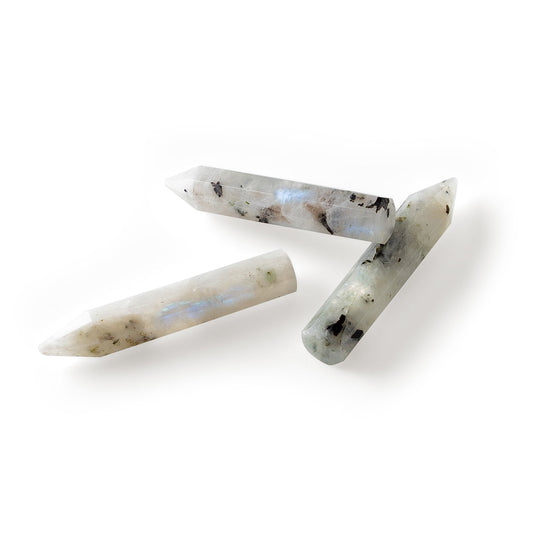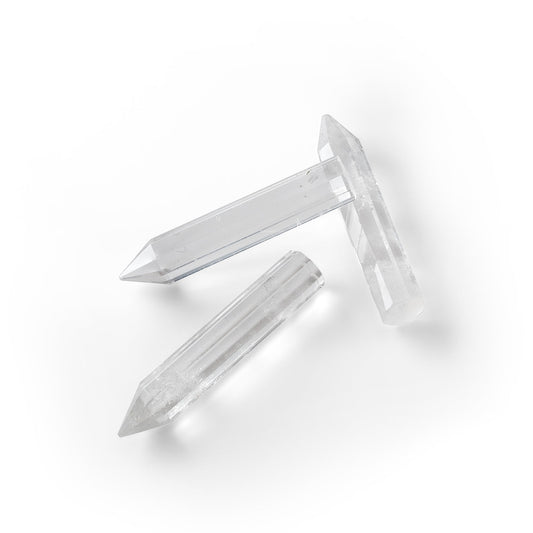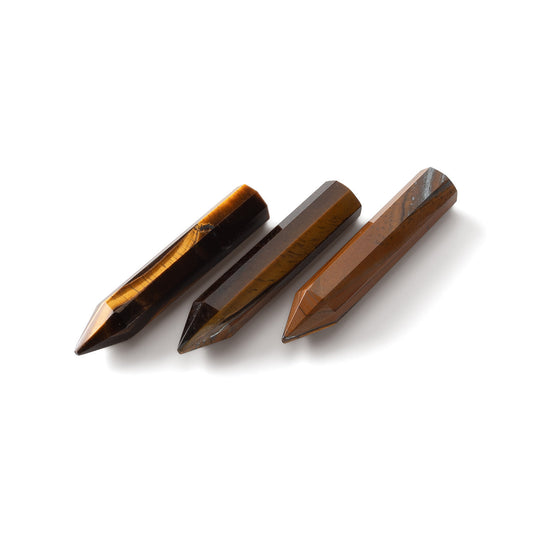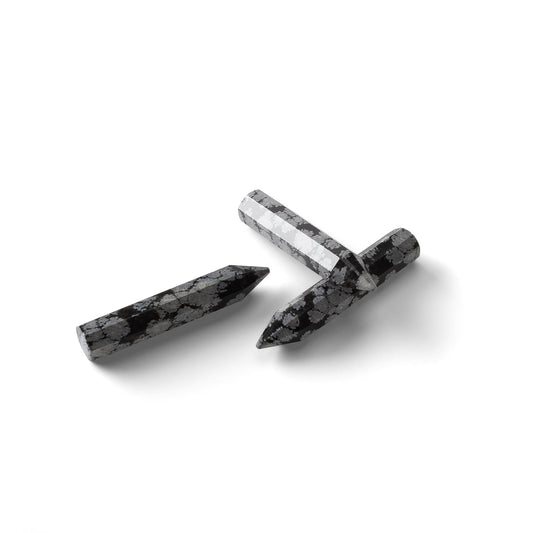
Nordic Runes - Meaning
Nordic Runes – Understanding Ancient Symbols and Finding a Part of Yourself in Them
Hello! My name is Mateusz, and today I want to take you on a long, interesting, and (hopefully) engaging journey through the world of Nordic runes. I bet that since you've come across this guide, you already know a bit about their existence. But do you know the history behind each symbol? Do you know how ancient warriors and priestesses used them in magical rituals, and how we – modern seekers of spirituality – can relate them to everyday life? Or perhaps you've heard that runes can be used for divination, decorating talismans, or creating protective amulets?
I myself was drawn into runes quite recently. When I first saw them in the form of stones with engraved symbols, I immediately felt a certain pull. I started delving into the subject and in the process, I fell head over heels into Nordic myths, stories about Odin, Freyr, or Freya. And that's how my adventure began.Today, I want to tell you in a less formal, more "relaxed" way what these runes actually are, why they are used, and what each of the 24 symbols, collectively called the Elder Futhark, symbolizes.
Brew yourself some tea, get comfortable, because you're in for a hefty dose of knowledge (and I hope, enjoyable reading too). Ready? Let's begin!
1. Where did these runes come from?
Let's transport ourselves for a moment to the cold regions of Scandinavia, around the 2nd to 8th centuries AD. During that period, the peoples of the north (Germans, Scandinavians) used a script called runes. Their alphabet – known as the Elder Futhark – consisted of 24 characters. The name comes from the first letters in order: F, U, Th, A, R, K (Fehu, Uruz, Thurisaz, Ansuz, Raido, Kenaz).
For the ancient Scandinavians, runes had not only a utilitarian function (like our Latin alphabet), but also a magical and ritualistic one.It was believed that carving runes into stone, metal, or wood invoked specific energies. If someone wanted to ensure protection, they could carve a specific symbol onto a war axe. If it was about fertility, they would reach for a different rune and place it in a strategic location in the home. This was not a simple "alphabet" – it was a complete set of symbols corresponding to nature, deities, and the forces of the Universe.
2. Runes in Practice – Antiquity and Today
Long ago, runes were used for inscribing tombstone inscriptions, decorating weapons, and also in divination. Priests and priestesses (depending on the cultural circle, called differently) were able to "read" the future by casting dice with carved symbols. Each rune had its own "character" and suited a different sphere of life.
Nowadays, in the 21st century, few people use runes for ordinary writing (unless they are enthusiasts of historical reenactments). However, the symbols themselves have not faded into oblivion.Quite the opposite – many people, including myself, gladly return to them as a tool for self-development and spiritual reflection. Someone might say: "These are just superstitions!". I respond: "What harm is there in trying, if it might boost your self-confidence or remind you that you have inner strength?". From my experience, runes work most effectively when you treat them with respect, but also with common sense – similar to talismans, prayers, or affirmations. You are the driving force of change in your life, and runes can accompany and strengthen your intentions.
3. How to interpret individual runes?
Now we get to the heart of the matter. Below you will find the 24 symbols of the elder futhark. I will dedicate some space to each of them – I will explain what they symbolize, what energies they bring, and in which situations they might be useful. Of course, runes can be interpreted in many ways, depending on the tradition and the teacher. I am sharing my vision with you, derived from reading various sources and my own practice.Remember to trust your own intuition as well – if you feel that, for example, Fehu speaks to you differently than what I write, that's OK too.
3.1. Fehu (ᚠ) – Abundance and Success
Basic associations: wealth, property, financial prosperity, development.
Mythological background: in ancient times, the word "fehu" referred to cattle, which for the northern peoples meant tangible wealth (the more cattle, the greater the wealth).
How I understand it: Fehu says: "You have resources, use them wisely". It could be about money, skills, or social contacts. If you're struggling with a lack of money, Fehu reminds you that it's worth taking active steps and not being afraid to demand fair compensation for your services. If you're reading runes and see Fehu, sometimes it's a sign that wealth – material or immaterial – is just around the corner.
3.2. Uruz (ᚢ) – Strength and Endurance
Basic associations: aurochs (extinct wild cattle), nature's power, health, vitality.
Mythological background: Uruz embodies the untamed strength of ancient creatures.
How I understand it: When I need extra energy to spur me into action, Uruz is like an encouraging friend. You can also treat it as a symbol of recovery – it reminds you that you have the primal power to regenerate. Sometimes, you just need to let it surface.
3.3. Thurisaz (ᚦ) – Protection and Breakthrough
Basic associations: giants (Thurs), the force of chaos, violence.
Mythological background: in Norse myths, giants were not always evil, but often stood in opposition to the gods. They had to be negotiated with or fought against.
As I understand it: Thurisaz is a rune that can "break" old patterns and unleash powerful energy within us. It is sometimes associated with aggression, so I use it cautiously. However, it works great as a protective shield and a tool for quick change in life.
3.4. Ansuz (ᚨ) – Wisdom and Communication
Basic associations: god Odin, word, inspiration, secret knowledge.
Mythological background: this rune is directly linked to Odin, who sacrificed much to learn the secret of the runes.
As I understand it: Ansuz is like an inspiration that suddenly makes you see various issues with clarity of mind. It can help you in learning, writing, and developing your ability to speak to people. When I feel a creative block, I reach for Ansuz to open my mind to fresh ideas.
3.5. Raido (ᚱ) – Journey and Change
Basic associations: movement, path, travel, but also rhythm and harmony.
Mythological background: in many myths, a journey signified spiritual transformation – Odin hanging on the Yggdrasil tree, Sigurd seeking knowledge...
How I understand it: Raido is the rune of the path, so if you are facing a life journey – whether it's an actual trip or a metaphorical "setting out" towards new goals – it's worth having it with you. It gives an impulse for continuous development and indicates that stagnation is not the best way.
3.6. Kenaz (ᚲ) – Creativity and Inner Light
Basic associations: torch, flame, illumination, knowledge.
Mythological background: in Norse culture, the light of fire was always associated with warmth and also the passion for creation.
As I understand it: Kenaz ignites a spark that can help you in creating artistic works or solving a problem in a creative way. I feel like it's a torch-rune: it illuminates the darkness of ignorance and brings to the surface ideas you didn't know existed.
3.7. Gebo (ᚷ) – Gift and Reciprocity
Basic associations: gift, exchange, partnership, relationships.
Mythological background: in Norse communities, the principle of reciprocity was important – you receive something, but you also give in return.
As I understand it: Gebo is the rune of harmony between people. When you want to build a good relationship in a partnership, in friendship, at work, this rune helps to remember that mutual generosity (emotional, material) is the key to success.
3.8. Wunjo (ᚹ) – Joy and Fulfillment
Basic associations: happiness, harmony, pleasure in life.
Mythological background: Wunjo appears as the moment when toil ends and the celebration of victory and satisfaction begins.
How I understand it: When Wunjo appears, it is a signal to take a breath and notice the good sides of everyday life. Life is not just about the race – sometimes it is worth filling oneself with gratitude and feasting with loved ones.
3.9. Hagalaz (ᚺ) – Perseverance in changes
Basic associations: hail, storm, unexpected difficulties, but also purification.
Mythological background: hail could destroy crops, but it was also considered a divine sign, shaking what must change.
How I understand it: Hagalaz is a transformer rune. Its appearance can be unpleasant (like a sudden storm that destroys), but then the sun comes out and it turns out that what emerged after the hailstorm is healthier, stronger.When you feel that chaos is happening in life – be sure, Hagalaz can motivate you to face the change.
3.10. Nauthiz (ᚾ) – Patience and Determination
Basic associations: scarcity, necessity, inner discipline.
Mythological background: in the Norse language, this word referred to "need". Hence, this rune is sometimes associated with "a crisis that triggers ingenuity".
How I understand it: Nauthiz reminds us that even if something is lacking, you can turn that lack into an advantage. Do you need something? Consider whether you can develop it within yourself. In difficult times, this rune strengthens character.
3.11. Isa (ᛁ) – Calmness and Control
Basic associations: ice, halt, stillness, concentration.
Mythological background: winter and ice in Scandinavia are no joke – they are tough, but they also allow nature to calm down and gather strength.
How I understand it: When there is too much chaos in life, Isa says: "Take a break. Cool down. Stop the frantic run for a moment." A good rune when one feels overwhelmed by too many impressions. Isa does not solve problems, but it allows one to gain some distance.
3.12. Jera (ᛃ) – Cyclicality and Growth
Basic associations: year, harvest, nature in cycles, patience.
Mythological background: agriculture in ancient communities was fundamental – one waited for the moment of sowing, growth, harvest, and rest.
How I understand it: Jera teaches: everything has its time, you cannot speed up certain processes. If work on your project seems to drag on endlessly, Jera gives hope that you will eventually reap the rewards.But remember – just like in agriculture: you don't sow, you don't reap.
3.13. Eihwaz (ᛇ) – Balance and Transition
Basic associations: yew tree, immortality, transformation, connecting dimensions.
Mythological background: the yew was a sacred tree for the Vikings, heralding endurance despite adverse conditions.
How I understand it: Eihwaz supports during times of transition. When you know that something old is ending and something new wants to be born, this rune helps maintain calm during the "crossing". It's like an internal pillar you can lean on during life's revolutions.
3.14. Perthro (ᛈ) – Mystery and Opportunities
Basic associations: fate, destiny, a cup concealing secrets, surprise.
Mythological background: here we have many interpretations – some see the bowl of destiny, others something like "dice" thrown by the gods.
How I understand it: Perthro suggests that not everything in life is predictable. Sometimes it's worth relying on intuition or taking risks. A good rune when you feel that your life needs a bit of magic and the discovery of new paths.
3.15. Algiz (ᛉ) – Protection and Intuition
Basic associations: moose or deer antlers, arms raised upwards, contact with the divine.
Mythological background: a symbol of an antenna that connects a person with higher forces, while also protecting them.
How I understand it: Algiz is a shield rune. It protects against negative influences and at the same time sharpens intuition, so you can detect "bad vibes" yourself.When I feel uncertain in a new environment, I imagine that Algiz creates a safe barrier around me.
3.16. Sowelo (ᛋ) – Light and Success
Basic associations: full sun, victory, clarity, joy of life.
Mythological background: the sun in Norse myths is a source of energy and warmth, illuminating the darkness and giving hope.
How I understand it: Sowelo is a symbol of triumph over obstacles and enlightenment. If you are struggling with difficulties and Sowelo suddenly appears, it's like winning a battle. It reminds us that there is an inner sun within each of us, worth awakening.
3.17. Tiwaz (ᛏ) – Courage and Justice
Basic associations: god Tyr, honor, warrior, moral principles.
Mythological background: Tyr sacrificed his hand to incapacitate the wolf Fenrir – a heroic and sacrificial act.
As I understand it: Tiwaz is useful for all who engage in battle for a just cause. It is a rune that reminds us that sometimes something must be lost to achieve a greater good. It helps when you need to strengthen your determination and remain true to your principles.
3.18. Berkana (ᛒ) – Growth and Rebirth
Basic associations: birch, feminine energy, the beginning of life, motherhood, regeneration.
Mythological background: spring, greenery, new blood in nature – all of this was associated with fertility goddesses.
As I understand it: Berkana is like a warm, spring rain that causes dormant seeds to sprout. If you want to start a new project, enhance creativity, or bring gentle change into your life, Berkana offers support.
3.19. Ehwaz (ᛖ) – Movement and Cooperation
Basic associations: horse, loyalty, speed, joint action.
Mythological background: the horse was a companion to the warrior and a symbol of efficiency in Viking culture (quick movement, but also a bond with the animal).
How I understand it: Ehwaz is useful when you are planning a move, a trip, a job change, or need better cooperation with others. It is a rune that emphasizes that more can be achieved together (or in a team) than alone.
3.20. Mannaz (ᛗ) – Humanity and Consciousness
Basic associations: human being, cooperation, awareness of "I" and "we".
Mythological background: the rune of man, often used to emphasize unity within a group and the role of man in the cosmos.
As I understand it: When you feel the need to better understand yourself in relation to others, Mannaz gives you a hint: "Remember, you do not live in a vacuum, you influence people and they influence you". It also adds courage to learn about your own capabilities and limitations.
3.21. Laguz (ᛚ) – Fluidity and Intuition
Basic associations: water, river, moon, emotions, subconscious.
Mythological background: in Norse myths, water was the key to other worlds (e.g., Mimir's well of knowledge).
As I understand it: Laguz reminds us to flow with the current of our own intuition, rather than stubbornly pushing against the stream. A good rune when you are learning to meditate, listen to dreams, or learning to listen to your inner voice. It helps to find depth in feelings.
3.22. Ingwaz (ᛝ) – Potential and Creation
Basic associations: god Frey (Ing), fertility, seed, germination power.
Mythological background: Frey was the god of fertility and everything related to gains, stable development in nature.
How I understand it: Ingwaz says: "There is a seed of an idea, project, feeling within you, and if you nurture it properly, something beautiful will grow." The rune enhances the creative process and also helps in initiating a new chapter.
3.23. Othala (ᛟ) – Heritage and Security
Basic associations: home, family, inheritance, roots, homeland.
Mythological background: Othala was associated with land ownership and family identity.
How I understand it: When you need to strengthen your bond with your ancestors or feel a sense of belonging somewhere, Othala provides a sense of security and stability.He says: "You are not alone – generations stand behind you, and you are building the foundations for the next ones".
3.24. Dagaz (ᛞ) – Light and Transformation
Basic associations: dawn, new day, awakening, radical change.
Mythological background: the moment when night gives way to day, symbolizing sudden enlightenment.
How I understand it: Dagaz is the rune of breakthrough. When everything seems shrouded in darkness, suddenly dawn comes and changes the perception of reality. If you are facing a decision that could change your life, it is a sign that Dagaz will give you courage and show you the way to the light.
4. How to work with runes on a daily basis?
You are probably wondering: "Okay, I know the symbolism, what next?".Here are a few of my tried-and-true (and simple) methods:
Choosing a rune for the day
In the morning, before the hectic pace of work catches up with you, take a set of runes (it could be a set of stones, wooden pieces, or cards). Draw one rune, close your eyes, and ask: "What do I need today? What energy will support me?". Read the symbol and try to observe throughout the day how its power manifests.
Amulet or talisman
You can choose a specific rune (or a combination of two or three) and engrave it on a pendant, keychain, or bracelet. For example, I often wear Algiz when going to an unfamiliar place because it makes me feel more secure. I don't treat it as a magical spell, but rather a nice reminder: "Be cautious, but stay calm".
Rune divination
Those who prefer a more magical approach can lay out runes like tarot cards: ask a question and draw several symbols.But remember, runes do not tell you what will definitely happen – rather, they give a suggestion of the energies at work around you and what you can do with them.
Meditation
Simply sit in peace, gaze at the shape of a given rune, and let your thoughts flow. Imagine that this shape is speaking to you, telling you what lies on its "heart". It sounds a bit abstract, but it's a nice method to deepen your understanding of runes.
Creative notes
You can keep a runic journal. For example, you choose Ingwaz, note down your associations, what happened in your life on that day, and then check if these events somehow relate to the symbolism of the rune.
5. Questions and doubts
Are runes a religion?
No, runes themselves are not a religion. They are a tool. One can be a Christian, an atheist, a follower of Norse beliefs, or not care at all, and still draw inspiration from runes.
Do runes work like curses and spells?
Let's not go to extremes. In ancient times, runes were sometimes used to cast spells, but it's more about the user's intention than the rune itself. A rune is a symbol, and you decide whether you want to send positive or negative energy.
How to choose "your" rune?
Intuition is the key. You might be drawn to the shape or the name. Perhaps you feel that at a certain point in your life, you want to strengthen your strength (Uruz) or start a new chapter (Berkana). Sometimes a simple test is enough: look at the list of runes and see which one catches your eye first.
6. A few words from me at the end
In writing this guide, I wanted to show that runes do not have to be reserved for the initiated "masters of magic".This is an incredibly beautiful system of symbols where everyone can find something for themselves – inspiration for self-improvement, support in difficult times, motivation to achieve goals, or at least an interesting starting point for meditation.
Many people tell me: "Mateusz, but these are just signs. Just the shape of letters. Aren't you exaggerating with all this philosophy?" And I respond: "Have you ever wondered why some wear a cross, while others wear an ornate letter 'A' around their neck? Because symbols have meaning for us. But Norse runes have that ancient, magical flavor that stimulates the imagination and belief in multiple possibilities".
If, while reading about runes, you felt that some spoke to you more, perhaps try to give them more attention. Focus on one of them, read about it, delve into the myths, try to feel its energy in everyday life. Just remember: don't expect miracles if you don't take action yourself. Runes are not Aladdin's lamps that grant wishes.I see them more as companions on our journey – reminding us of courage, joy, the need for growth, and so on.
6.1. Conclusion
You have reached (I hope) the end of my not-so-short guide. Together, we have gone through the history of runes, mythological contexts, and practical tips. Discussing the 24 symbols could probably take even more time, as each rune contains many nuances. But I believe these basics will help you start or deepen your adventure with Nordic symbols.
Finally, I wish you to choose the rune (or set of runes) that will support you on your path, whatever that means in your life. May Fehu bring you abundance, Uruz – strength, Wunjo – joy, and Algiz – protection. And if chaos overtakes you, Hagalaz will remind you that the sun always comes out after the storm.
Thank you for wanting to listen to my stories. If you have any questions, feel free to ask them (in your thoughts or to someone who also enjoys the topic of runes). Remember: an open mind and a heart ready for new experiences are what matter. Perhaps the runes will show you something within yourself that you have not yet discovered. Good luck and see you in the next stories about ancient beliefs and spiritual paths.
Skál! – as the ancient Vikings would say. May the runes be with you!


















